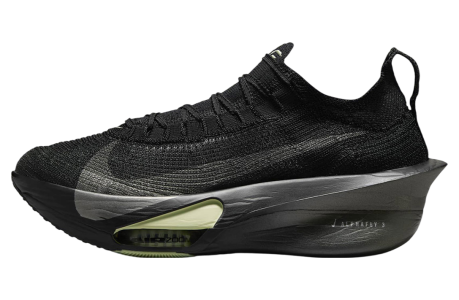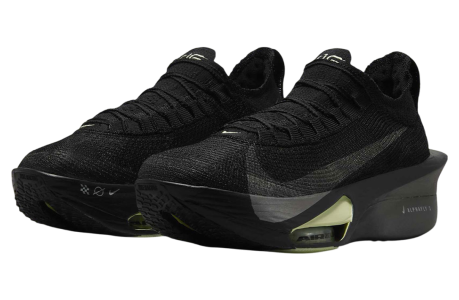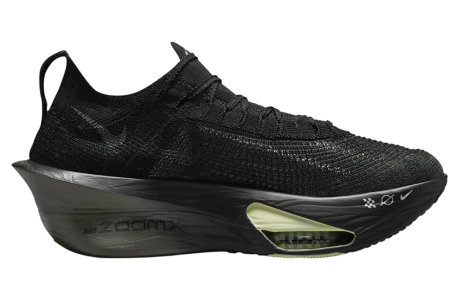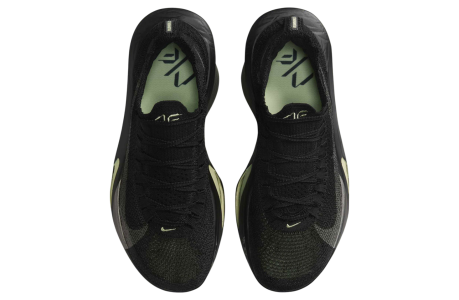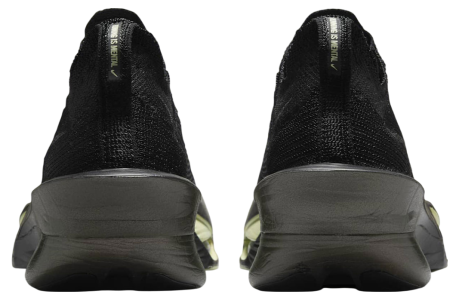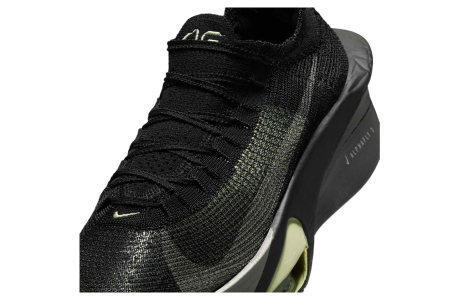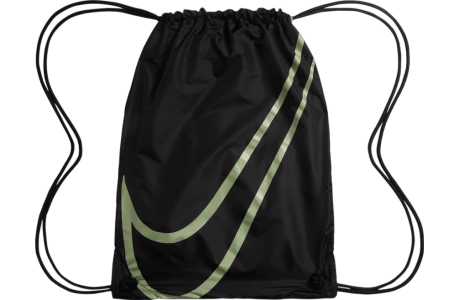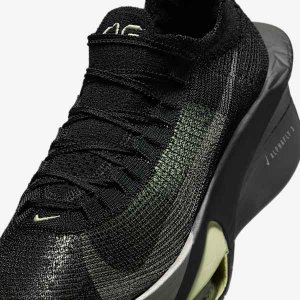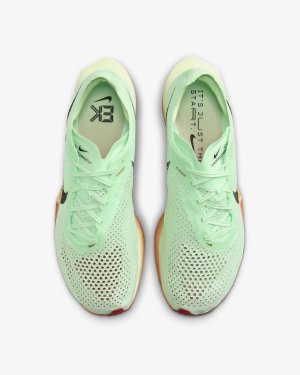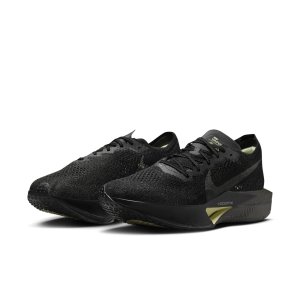So I've had a few runs in these now and instead of doing a thorough review like I did with the VaporMax, I'm gonna switch it up a bit... don't know how to explain it, but the review aspects will be involved in the overall post
(highlighted in green) about how the shoes contributed to improving my running along with other factors. I know I usually have a summed-up statement, but too bad; it ain't happening this time.
First off, let me show you the two 6-mile runs I've done. One is with the Air VaporMax, and the other is with the VaporFly 4%.
You can tell the obvious difference, especially with the dates given right there. From memory, I took the same few 15- to 30-second breaks throughout the run. Now I can say that the shoes did help, but this is more than just what the shoes can do to help me run more efficiently. There are a few other factors that contributed to this +0:29/mi difference:
1: It's a fresh pair of shoes vs. a pair of shoes about 100 miles in,
2: It's forefoot/midfoot striking vs. normal stride of heel/midfoot striking (more on this later on), and
3: Quicker turnover rate vs. normal turnover rate
Let me get this out of the way first... I've already stated that I'm a fan of the Flymesh on these shoes, so that's that. I'm not a marathon runner in any way, but I do love to take advantage of ways to make my runs more efficient and enjoyable, much like anyone else, I'm sure.
A fresh pair of shoes. This shoe is only 12.5 miles in. The VaporMax is now 180 miles in, and about 176+ when I got the Zoom Vaporfly 4% in. Whenever you have new running shoes, it's that rejuvenating feeling as if you're fully recovered and more well-rested than you ever were. That's already helpful to give people an extra boost to their run and go a bit faster.
The change in striking. Given that this shoe has a carbon fiber plate sandwiched between two layers of the ZoomX foam, the one thing I've read on here (and also from a comment from YouTuber Jamison Michael) is that the shoe benefits well when striking midfoot or forefoot, and it makes sense. I did a little brief search on how to modify striking to start things off, and I found this quick little video along with a few others that go more in-depth on the process:
So last week after a few runs or just whenever I can, I was working on some balancing, and then this past Sunday and Tuesday, I ran with multiple breaks to kinda ease my way into getting used to it. I've tried doing it all at once with the Zoom Flys... not exactly the best idea, haha. Every quarter-mile distance, I'd run with focus to land on forefoot or midfoot (at the least) and then take a short break. I did this with the Zoom VaporFly on that Sunday, and Air VaporMax on the following Tuesday. The result was that the VaporMax recorded a slower time of -0:11/mi. Not too bad though. Today's 6-miler and Friday's 5K involved just normal runs with striking midfoot/forefoot. Switching the stride has its greater benefits other than "running faster," because the body takes less of a hit, and that already saves you a bit of energy already. The knees don't take a hit (which explains my left knee feels fine right now after 6 miles in FOAM cushioning rather than Air), and for others, it puts less pressure on the hips, too.
It also helps that the traction is FAR SUPERIOR to the Zoom Flys, because the rubber can grip very well on dirt/sand areas. Sorry, @rfx45, I couldn't make myself strike at the old way. However, one things I haven't told you guys is that the way I strike is interesting. My left foot can land however it can, no problem. The right foot can only land either heel or midfoot at best, because I have a bit of a sensitive Achilles (not sure if it's exactly minor tendinitis), so when I land on the forefoot, I'll feel a bit of pain. When I land on the midfoot, it's mostly non-existent, so out of natural reflex, I TOUCH with the heel, and strike with the rest of my foot. Also, I think in the VaporMax thread, someone told me about how there's the slightest supination to a natural stride? @soccerandkikz, I think it was you that brought it up... to respond to that post, I SEE IT NOW! I recorded myself to check my stride, and I saw that slight supination to the natural stride. Mindblown... haha.
 illustrayt
- I really need to look into the Newton running shoes to see if those shoes can help me enhance my stride adjustment. I feel like it's getting there, but it's not fully there.
Turnover rate. One new term I've recently learned when I was trying to get opinions about this shoe is "turnover." I thought, "Apple turnovers? I like those." From my understanding (correct me if I'm wrong here,) I think "turnover" refers to how fast you're able to land and lift off to accumulate a certain amount of steps per minute. To make this fast (no pun intended), I am almost sure that I was faster off of my feet with these on vs. the VaporMax. Although the ZoomX cushioning and fiber plate is springy and responsive as **** (and as most others can say where I can agree, much more responsive to the very popular adidas Ultra Boost), that responsiveness doesn't kick in the same way as I run... but then again, I'm ******* running, and it's pushing me forward faster. That action-reaction should tell you something as I don't have time to feel every little detail of that bounce to each step as opposed to walking in them. So for a faster turnover rate, it's not what I'm used to, but the less time spent on the ground is helpful to become lighter (I guess?) on my feet. By the way, I could be 100% wrong about all of this.
illustrayt
- I really need to look into the Newton running shoes to see if those shoes can help me enhance my stride adjustment. I feel like it's getting there, but it's not fully there.
Turnover rate. One new term I've recently learned when I was trying to get opinions about this shoe is "turnover." I thought, "Apple turnovers? I like those." From my understanding (correct me if I'm wrong here,) I think "turnover" refers to how fast you're able to land and lift off to accumulate a certain amount of steps per minute. To make this fast (no pun intended), I am almost sure that I was faster off of my feet with these on vs. the VaporMax. Although the ZoomX cushioning and fiber plate is springy and responsive as **** (and as most others can say where I can agree, much more responsive to the very popular adidas Ultra Boost), that responsiveness doesn't kick in the same way as I run... but then again, I'm ******* running, and it's pushing me forward faster. That action-reaction should tell you something as I don't have time to feel every little detail of that bounce to each step as opposed to walking in them. So for a faster turnover rate, it's not what I'm used to, but the less time spent on the ground is helpful to become lighter (I guess?) on my feet. By the way, I could be 100% wrong about all of this.  I just wanted to say that the cushioning does something else other than saying the same **** that "it's better than the Ultra Boost." Like, damn, we get it; Ultra Boost this, VaporMax that, Vaporfly this. ****, give me a beneficial reason for the life of sport, not for the life of ******* hype.
I don't know what else I can mention, but one thing I can say is that so far... I actually like these. It's only going to be part of my rotation, but not the main driver. However, these benefit so well for the long runs, and the VaporMax isn't exactly a great shoe to run long distances in. I mean, the VaporMax is fine to run 5-6 miles... but not really.
I just wanted to say that the cushioning does something else other than saying the same **** that "it's better than the Ultra Boost." Like, damn, we get it; Ultra Boost this, VaporMax that, Vaporfly this. ****, give me a beneficial reason for the life of sport, not for the life of ******* hype.
I don't know what else I can mention, but one thing I can say is that so far... I actually like these. It's only going to be part of my rotation, but not the main driver. However, these benefit so well for the long runs, and the VaporMax isn't exactly a great shoe to run long distances in. I mean, the VaporMax is fine to run 5-6 miles... but not really. 
I hate to sound like a broken record, but I feel like this doesn't get across to people questioning the price. The reason it's $250 is that the shoe comes with an actual carbon fiber plate. The new ZoomX midsole isn't exactly the big price-adjuster; it's the plate. Again, the Mercurial Vapor VII soccer cleat was a series that had a nylon plate retailing for $200, and a higher-end version for $400 with a full carbon fiber plate. The other reason: marketing. Someone's gotta pay the dues, right?








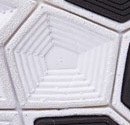



 I just wanted to say that the cushioning does something else other than saying the same **** that "it's better than the Ultra Boost." Like, damn, we get it; Ultra Boost this, VaporMax that, Vaporfly this. ****, give me a beneficial reason for the life of sport, not for the life of ******* hype.
I just wanted to say that the cushioning does something else other than saying the same **** that "it's better than the Ultra Boost." Like, damn, we get it; Ultra Boost this, VaporMax that, Vaporfly this. ****, give me a beneficial reason for the life of sport, not for the life of ******* hype.







